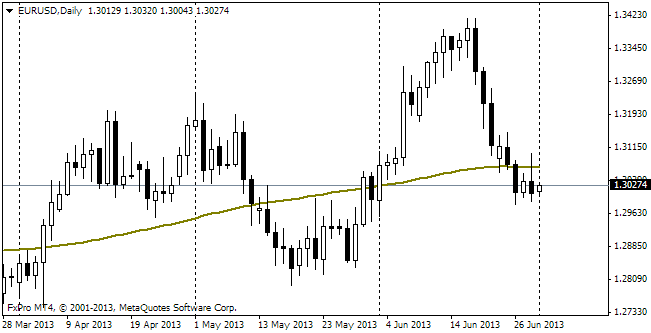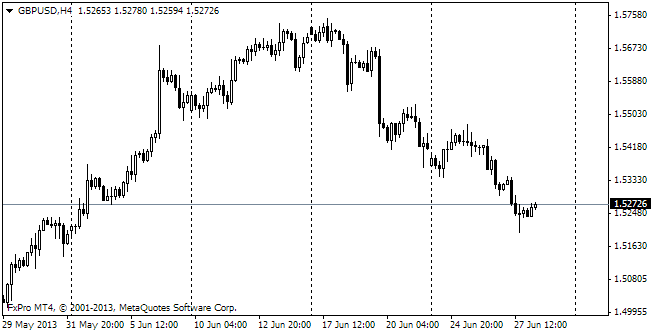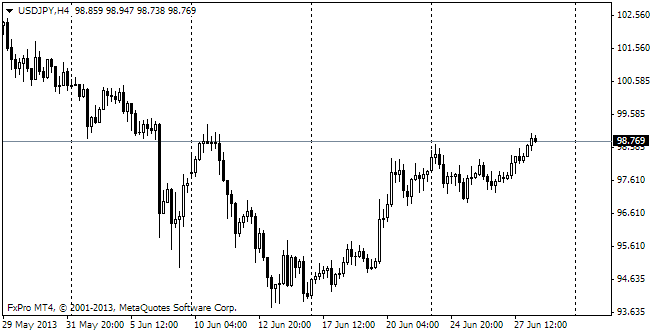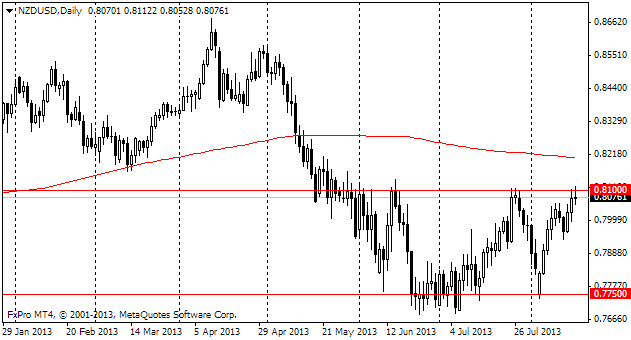EUR/usd
Yesterday we spoke about growing signs of a reversal in the pair. Though it was a quiet day yesterday and the single currency even went off the local lows, we are now only firmer in our belief. Yesterday's move from 1.3506 up to 1.3560 was nothing more than a correction after the impressive decline on Friday. Since neither Friday nor yesterday brought any important news, which would have accounted for the movement of the euro/dollar, the latter should be treated from the technical point of view. The drop by more than a figure, which was then followed by a proper pullback (by 50%). If we are right, already today (let's assume, on publishing of the ZEW Business Sentiment) we will observe another and probably more successful attack on 1.3500. As described in our yesterday's review, if this level is broken, the current uptrend most likely will come to an end and, as a result, give rise to intense selling. Germany's business sentiment is expected to show one more month of growth to the highest levels since 2006. As you remember, the GDP growth estimate in 2013 was rather low, promising a weaker growth performance than expected by the market. It's quite likely that the same will be with the business sentiment. It's hard to believe that Germany's business is able to remain that optimistic amid the economic slowdown caused by the EU troubled countries, as pointed out in Destatis' official commentary to the growth outlook 2013.

GBP/USD
The British pound did pretty well on Monday, managing to stay above 1.6400. Yet, it became possible due to the mood for a correction against the dollar, which overwhelmed the markets yesterday. However, we shouldn't forget about stronger fundamental statistics. And as expected, they will contribute to an upward revision of the IMF economic forecasts, scheduled for release today. It is supposed that the growth estimate will be raised to 2.4% from 1.9% expected in October. And though it will hardly bring nearer the date of the increase in interest rates as in New Zealand ( see below), it may enable the British currency to stay at quite high levels. As you remember, since 2009 the sterling hasn't stayed above 1.6500 for long.

USD/JPY
In regard to Japan we still see vigorous speculations about the possibility of reaching 2% in inflation by the efforts of the CB. In our opinion, it is much easier to do it technically than to lead the country to the level of self-maintaining growth. The CB's money printing and bond buying alone won't be able to create economic growth. However, we are reassured by the fact that Prime Minister Abe keeps searching for new means to increase business activity. One of his recent suggestions is to loosen building restrictions. Undoubtedly, it will spur growth of housing prices and will help the construction sector. Now usdjpy is trading at 104.6, while the CB's officials have started their two-day meeting on the monetary policy. Changes in the comments may boost weakening of the yen.

NZD/USD
New Zealand is again in the limelight. The release of inflation stats spurred expectations of increase in the interest rates. Besides, most economists suppose that it may happen already at the end of the month (Jan 30). But even out of caution supposing that from the current historic low of 2.5% the rate will be raised only in March, we still get quite an early move to tightening in comparison with other developed countries. It resembles much a case with Australia three years ago. The impressive economic growth rates have arisen due to China. The demand for everyday products (mainly for New Zealand milk) strongly affects the trade balance and leads to faster inflation inside the country. Now this indicator reached 1.6% y/y – the highest level over the last 7 quarters, thus surpassing expectations of economists. But the most important thing is that in the future inflation is also expected to grow, which the CB promised to fight.
